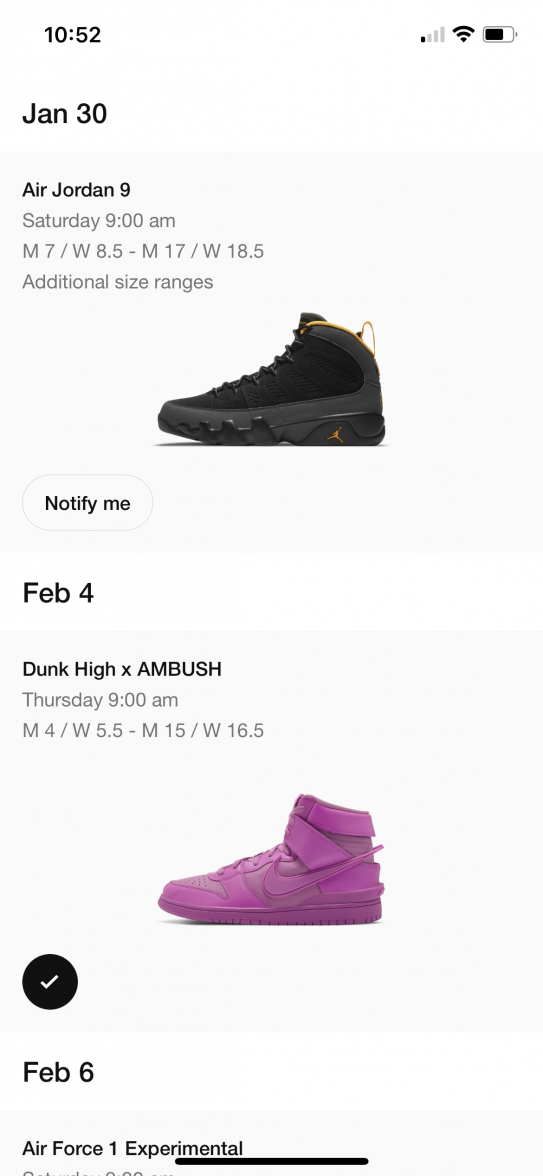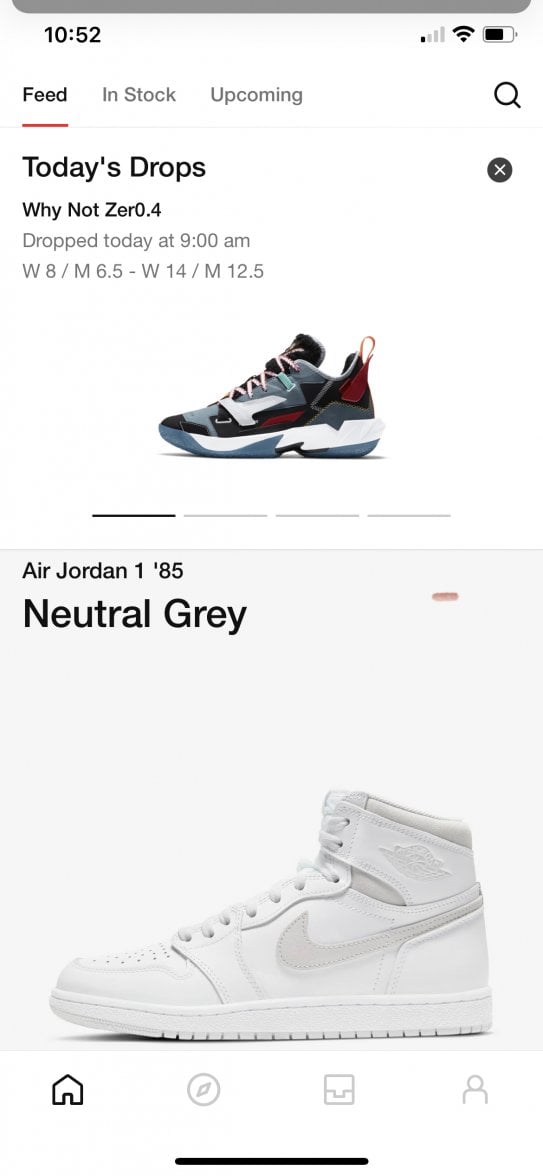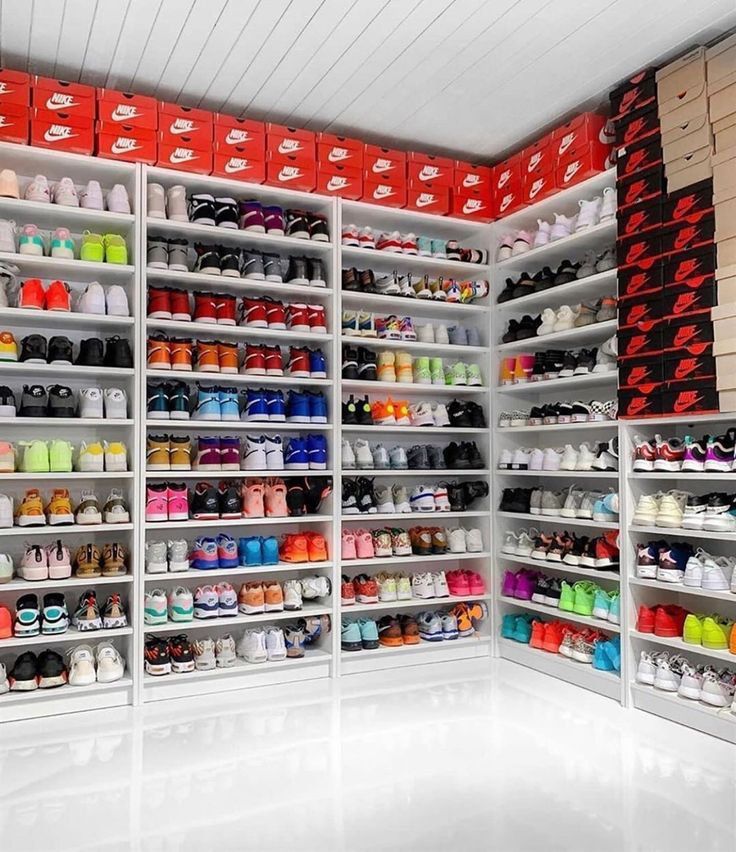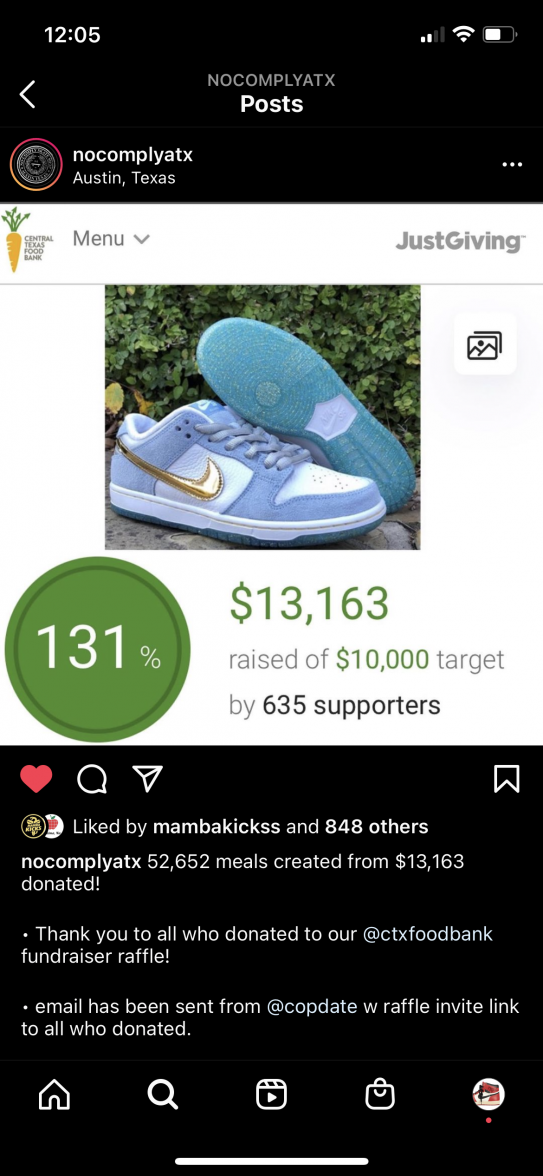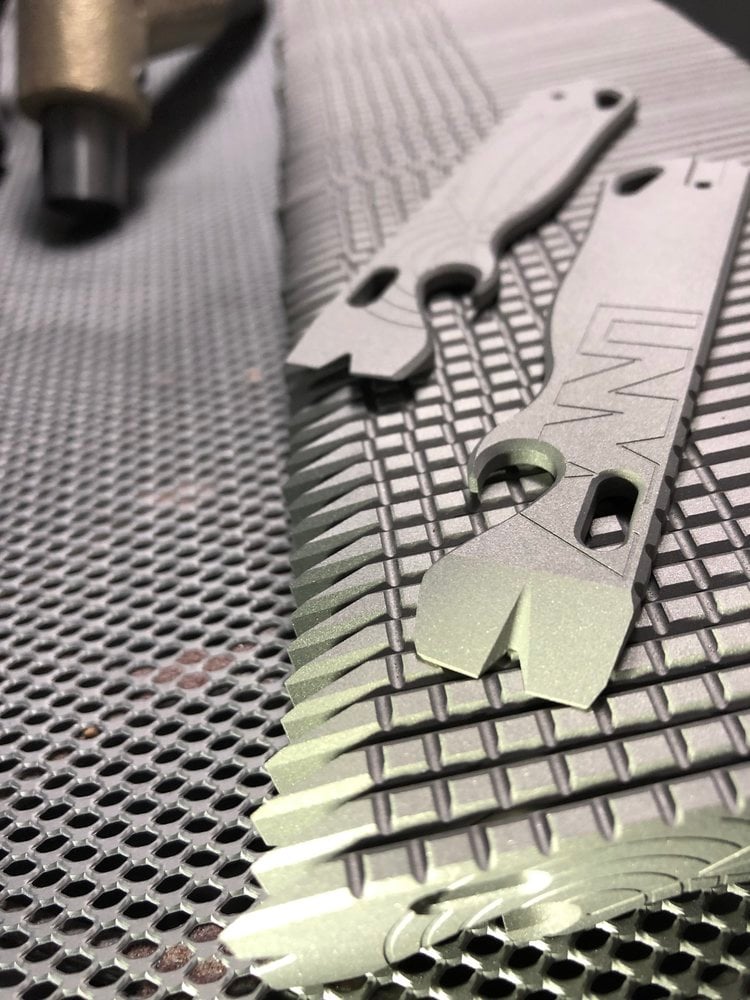cvalue13
·The watch and sneaker collector communities have a lot in common.
Example: highly anticipated sneaker “releases” are made in limited quantities, with tightly controlled distribution, are nearly impossible to purchase at MSRP, and fuel a multi-billion dollar grey market of sneaker flippers.
The sneaker industry has approached the market of hot releases differently than the watch industry.
Using Nike as example (and it is THE example in sneaker culture), the hottest releases are generally “dropped” simultaneously online and in only certain stores. The hottest of these shoes are never in your local mall, just as SS Daytonas aren’t found at the mall jewelers. When certain brick and mortar stores do get pairs, it can often be a single pair in each size.
As for online releases, Nike has a dedicated app called “SNKRS” used exclusively for moderating and facilitating the sale of their most collectible shoe releases. The SNKRS app notifies users of upcoming drop dates and times. When a drop date/time comes, the global sneakerhead community descends upon the app at the moment of release, furiously type in their orders, and hope the mysterious SNKRS “algorithm” bestows a pair upon them... to purchase.
To increase chances of landing a pair, normal buyers may have one or more accounts and devices in order to (they hope but don’t know) increase their chances of “copping.” Nike supposedly allows three accounts/devices per home before “flagging” your accounts. No one knows for sure. It’s a black box, with hours of YouTube videos dissecting supposed “winning” strategies to beat the robots.
Robots?
The grey market descend on SNKRS with technology: sometimes individuals and other times “cook group” teams utilizing bots and server proxies essentially place hundreds or tens of thousands of automated orders, almost instantly. And the tech warfare is justified: if the flippers place orders on the right shoes, each pair “cooked” could net hundreds or sometimes thousands of dollars profit.
While Nike purportedly goes to great lengths to thwart the flipper/cooking efforts, casual sneaker collectors are in broad agreement that Nike is failing miserably - or allege Nike is not even trying, because Nike quietly seeks the resulting hype. (Sounding familiar?)
Here’s a few pics of the SNKRS app environment:
And on SNKRS release mornings, having furiously rushed to submit an order (or three), hopefuls then wait several excruciating minutes for SNKRS to possibly return this, the hallowed “got’em” page:
Notice the built-in “share” button at bottom, so that the lucky few who cop a pair can seamlessly broadcast their good fortune to the community at large through Twitter, Facebook, etc., at one click.
But instead of the “got’em” notice, normal collectors mostly receive instead the expected “out of stock” message. They’re then left to wrestle their conscience over buying from the grey market.
(The sneaker grey market’s incredible sophistication relative to the watch grey market is a subject for another time: suffices just to point out the multiple sneaker resale platforms and apps that make Chrono24 look prehistoric.)
Here’s what a dedicated sneakerhead’s closet/shoe room may look like:
But here’s what a sneaker flipper’s driveway may look like after fedex delivers a successful “cook” of a single online sneaker release:
Meanwhile, at the few brick-and-mortar shoe stores lucky enough to get pairs of these hot releases, another interesting ecosystem has evolved.
Stores use many, creative, ways of attempting to fairly allocate these sneaker releases. One common approach are raffles. The best (to me) of these raffles require hopeful purchasers to donate $[x] to a designated charity for a single entry in a drawing for a chance to purchase a single pair. (My local sneaker/skate shop during Q4 2020 raised >$100,000 for the local food bank.)
Other approaches by brick and mortar stores involve trivia, scavenger-type hunts, or other challenges. In the best cases, these types of gamesmanship approaches are structured to reward collectors and dissuade flippers. For example, one local skateboard shop in possession of a particularly hot model of Nike-for-skateboarders required entrants to submit a video of themselves completing a particularly difficult skateboard trick. Another skate shop posted a photo of an otherwise obscure park bench, recognizable only to skaters as being near a well known skate location, and then pulled up to the skate spot with a van and sold shoes to the first people to arrive via skateboard. They were sold out in minutes, after a swarm of skaters descended.
Still in more basic efforts to deter flippers, the better stores will also only sell pairs the size of the purchaser, or require that buyers wear the shoes out of the store (instantly killing any “dead stock” premium on the pair).
It’s not all so rosy colored, though. Many less scrupulous shops “back door” pairs (if not all their pairs) to flippers. Meanwhile, online retailers do far too little to combat bots and mass purchase techniques used by the grey market; at best, online retailers are engaged in a losing technology arms race with the entire flipper tech industry. And fake sneakers are a particularly vile problem in the sneaker world, because the fakes are often made in the same factory as the “real” versions - raising the issue to an almost philosophical thought experiment regarding the meaning of “real” vs “fake” in the sneaker context.
In all, I suspect I’ve relayed a bare minimum for you to extrapolate how the rest of this sneaker collector story goes. Everyone hates Nike’s SNKRS app, but can’t help but be there at 9AM EST smashing the “purchase” button to potentially have a chance to purchase the shoes at retail. Brick and mortar attempts to purportedly weed out flippers both alienate collectors while also - judging by the health of the grey market - seem to not work (or be genuine attempts in the first place).
I outline all of the above because I often wonder about a parallel watch universe run by sneakerheads. In that universe, Rolex would have an app that every two weeks dropped an unspecified allotment of Pepsi GMTs, using a mysterious algorithm that - it turns out - disproportionately rewards the most technologically sophisticated grey market flipper “cook groups.” Also in that alternate universe, Omega Boutiques would make their cal.321B order lists by requiring buyers to donate to the food bank for a raffle ticket, but then also to require buyers to on the spot correctly answer obscure trivia about 105.003 dial configurations as a precondition to taking delivery.
What do you all think? If we were brainstorming better ways of orchestrating the hottest new watch releases, what would it be?
One arguable takeaway from my experiences in the sneaker world: things could be much more creative in the watch world, but for every new solution there will be two new problems.
Example: highly anticipated sneaker “releases” are made in limited quantities, with tightly controlled distribution, are nearly impossible to purchase at MSRP, and fuel a multi-billion dollar grey market of sneaker flippers.
The sneaker industry has approached the market of hot releases differently than the watch industry.
Using Nike as example (and it is THE example in sneaker culture), the hottest releases are generally “dropped” simultaneously online and in only certain stores. The hottest of these shoes are never in your local mall, just as SS Daytonas aren’t found at the mall jewelers. When certain brick and mortar stores do get pairs, it can often be a single pair in each size.
As for online releases, Nike has a dedicated app called “SNKRS” used exclusively for moderating and facilitating the sale of their most collectible shoe releases. The SNKRS app notifies users of upcoming drop dates and times. When a drop date/time comes, the global sneakerhead community descends upon the app at the moment of release, furiously type in their orders, and hope the mysterious SNKRS “algorithm” bestows a pair upon them... to purchase.
To increase chances of landing a pair, normal buyers may have one or more accounts and devices in order to (they hope but don’t know) increase their chances of “copping.” Nike supposedly allows three accounts/devices per home before “flagging” your accounts. No one knows for sure. It’s a black box, with hours of YouTube videos dissecting supposed “winning” strategies to beat the robots.
Robots?
The grey market descend on SNKRS with technology: sometimes individuals and other times “cook group” teams utilizing bots and server proxies essentially place hundreds or tens of thousands of automated orders, almost instantly. And the tech warfare is justified: if the flippers place orders on the right shoes, each pair “cooked” could net hundreds or sometimes thousands of dollars profit.
While Nike purportedly goes to great lengths to thwart the flipper/cooking efforts, casual sneaker collectors are in broad agreement that Nike is failing miserably - or allege Nike is not even trying, because Nike quietly seeks the resulting hype. (Sounding familiar?)
Here’s a few pics of the SNKRS app environment:
And on SNKRS release mornings, having furiously rushed to submit an order (or three), hopefuls then wait several excruciating minutes for SNKRS to possibly return this, the hallowed “got’em” page:
Notice the built-in “share” button at bottom, so that the lucky few who cop a pair can seamlessly broadcast their good fortune to the community at large through Twitter, Facebook, etc., at one click.
But instead of the “got’em” notice, normal collectors mostly receive instead the expected “out of stock” message. They’re then left to wrestle their conscience over buying from the grey market.
(The sneaker grey market’s incredible sophistication relative to the watch grey market is a subject for another time: suffices just to point out the multiple sneaker resale platforms and apps that make Chrono24 look prehistoric.)
Here’s what a dedicated sneakerhead’s closet/shoe room may look like:
But here’s what a sneaker flipper’s driveway may look like after fedex delivers a successful “cook” of a single online sneaker release:
Meanwhile, at the few brick-and-mortar shoe stores lucky enough to get pairs of these hot releases, another interesting ecosystem has evolved.
Stores use many, creative, ways of attempting to fairly allocate these sneaker releases. One common approach are raffles. The best (to me) of these raffles require hopeful purchasers to donate $[x] to a designated charity for a single entry in a drawing for a chance to purchase a single pair. (My local sneaker/skate shop during Q4 2020 raised >$100,000 for the local food bank.)
Other approaches by brick and mortar stores involve trivia, scavenger-type hunts, or other challenges. In the best cases, these types of gamesmanship approaches are structured to reward collectors and dissuade flippers. For example, one local skateboard shop in possession of a particularly hot model of Nike-for-skateboarders required entrants to submit a video of themselves completing a particularly difficult skateboard trick. Another skate shop posted a photo of an otherwise obscure park bench, recognizable only to skaters as being near a well known skate location, and then pulled up to the skate spot with a van and sold shoes to the first people to arrive via skateboard. They were sold out in minutes, after a swarm of skaters descended.
Still in more basic efforts to deter flippers, the better stores will also only sell pairs the size of the purchaser, or require that buyers wear the shoes out of the store (instantly killing any “dead stock” premium on the pair).
It’s not all so rosy colored, though. Many less scrupulous shops “back door” pairs (if not all their pairs) to flippers. Meanwhile, online retailers do far too little to combat bots and mass purchase techniques used by the grey market; at best, online retailers are engaged in a losing technology arms race with the entire flipper tech industry. And fake sneakers are a particularly vile problem in the sneaker world, because the fakes are often made in the same factory as the “real” versions - raising the issue to an almost philosophical thought experiment regarding the meaning of “real” vs “fake” in the sneaker context.
In all, I suspect I’ve relayed a bare minimum for you to extrapolate how the rest of this sneaker collector story goes. Everyone hates Nike’s SNKRS app, but can’t help but be there at 9AM EST smashing the “purchase” button to potentially have a chance to purchase the shoes at retail. Brick and mortar attempts to purportedly weed out flippers both alienate collectors while also - judging by the health of the grey market - seem to not work (or be genuine attempts in the first place).
I outline all of the above because I often wonder about a parallel watch universe run by sneakerheads. In that universe, Rolex would have an app that every two weeks dropped an unspecified allotment of Pepsi GMTs, using a mysterious algorithm that - it turns out - disproportionately rewards the most technologically sophisticated grey market flipper “cook groups.” Also in that alternate universe, Omega Boutiques would make their cal.321B order lists by requiring buyers to donate to the food bank for a raffle ticket, but then also to require buyers to on the spot correctly answer obscure trivia about 105.003 dial configurations as a precondition to taking delivery.
What do you all think? If we were brainstorming better ways of orchestrating the hottest new watch releases, what would it be?
One arguable takeaway from my experiences in the sneaker world: things could be much more creative in the watch world, but for every new solution there will be two new problems.
